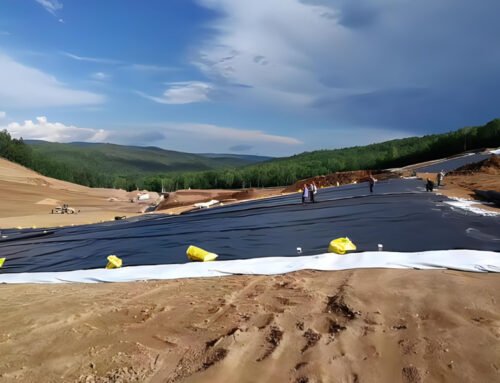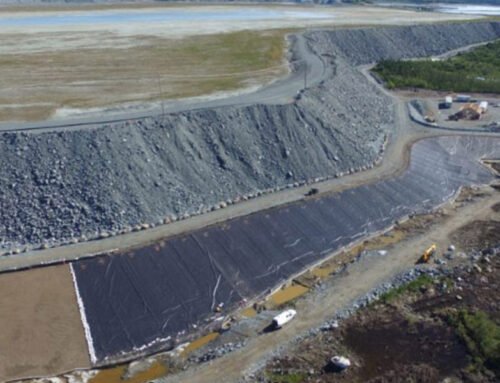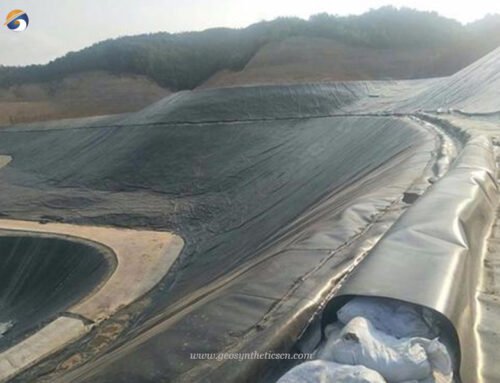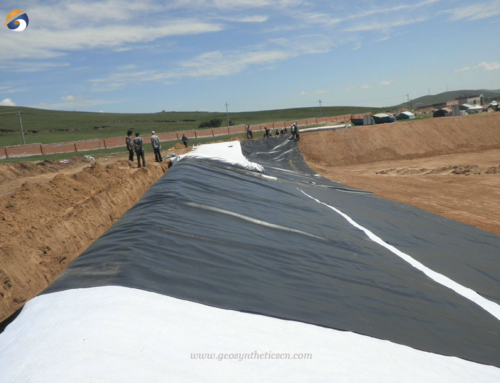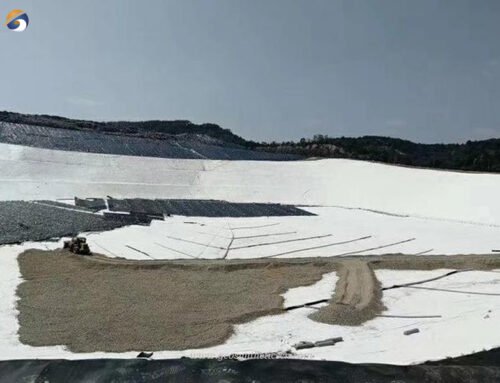Geosynthetic clay liner GCL is a kind of geosynthetic material specially used for anti-seepage of artificial lakes, waterscapes, landfills, underground garages, roof gardens, pools, oil depots and chemical storage yards. The geosynthetic clay liner is made of highly expansive Sodium-based bentonite which is filled between the special composite geotextile and non-woven fabric. The bentonite impermeable pad made by needle punching can form many small fiber spaces. The bentonite particles cannot flow in one direction, and they stay in the pad when it meets water. This kind of geosynthetic material can form a uniform and high-density colloidal waterproof layer to effectively prevent water leakage.
Mechanism of Geosynthetic Clay Liner
The main mechanism of geosynthetic clay liner GCL is to block the leakage channel of the earth dam with the impermeable plastic film, and with its larger tensile strength and elongation, it can withstand the water pressure and adapt to the deformation of the dam body; and the non-woven fabric is also a kind of polymer short fiber chemistry. The geosynthetic clay liner GCL, through needle punching or thermobonding, has high tensile strength and extensibility. After GCL liner combined with plastic film, it can not only increase the tensile strength and puncture resistance of the plastic film, but also due to the rough surface of the non-woven fabric, it can increase the friction coefficient of the contact surface, which is beneficial to the stability of the composite geomembrane and protective layer. At the same time, they have good corrosion resistance to bacteria and chemical effects, are not afraid of acid, alkali, and salt corrosion, and have a long service life when used in the dark.
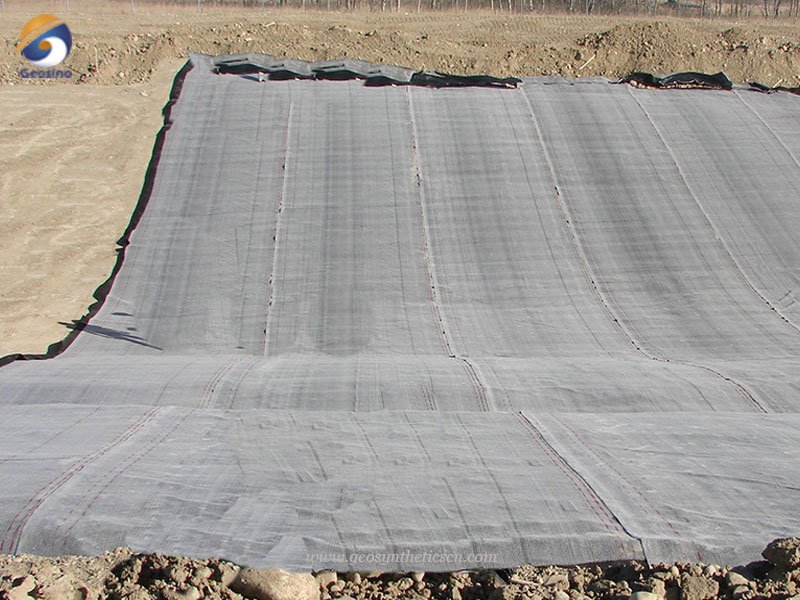
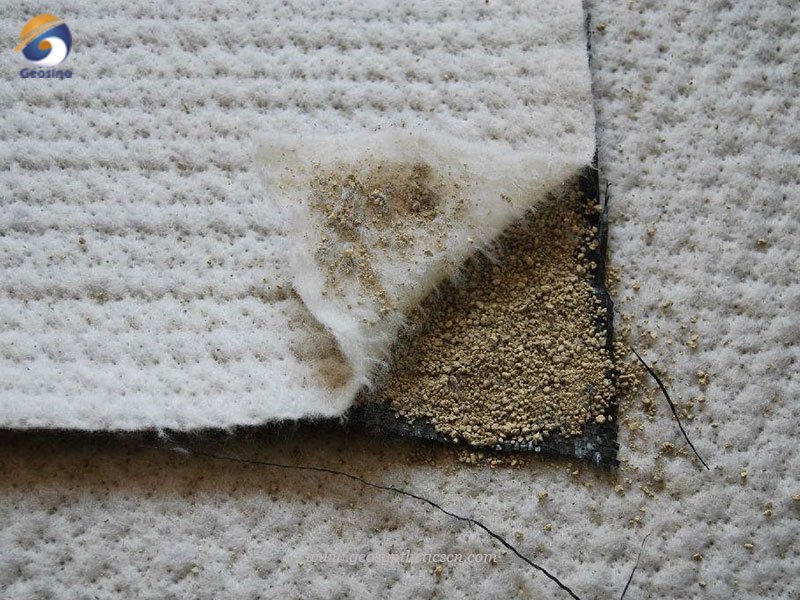
Characteristics of Geosynthetic Clay Liner
The geosynthetic clay liner GCL also has the following characteristics.
Compactness.
Sodium bentonite forms a high-density diaphragm under water pressure. When the thickness is about 3mm, its water permeability is less than &×10-11m/sec, which is equivalent to 100 times the compactness of 30cm thick clay, and has strong self-retaining properties.
Permanent waterproof performance.
Because sodium bentonite is a natural inorganic material, even after a long time or the surrounding environment changes, aging or corrosion will not occur, so the waterproof performance is long-lasting.
Simple construction and short construction period.
Compared with other waterproof materials, the construction is relatively simple and does not require heating and pasting. Just use bentonite powder, nails, washers, etc. for connection and fixation. No special inspection is required after construction, and it is easy to repair if waterproof defects are found. GCL is the shortest construction period among the existing waterproof materials.
Not affected by temperature.
It will not be brittle under cold weather conditions.
Integration.
Integration of waterproof materials and objects: When sodium bentonite encounters water, it has 20-28 times the expansion capacity. Even if the concrete structure vibrates and settles, the bentonite in the GCL can repair the cracks on the concrete surface within 2mm.
Green.
Bentonite is a natural inorganic material, which is harmless and non-toxic to the human body, has no special impact on the environment, and has good environmental performance.
Case Study Of Geosynthetic Clay Liner GCL
The geosynthetic clay liner is suitable for municipal (landfill), water conservancy, environmental protection, artificial lakes and building underground waterproofing and anti-seepage projects. It can still be constructed at negative temperature (-20℃) where traditional waterproof materials cannot be constructed; it can also be constructed on a damp base (without water); it cannot be constructed in rain or snow; it is not suitable for strong acid and strong alkaline solutions. Penetration; Because bentonite is an inorganic material, its durability is better than that of organic waterproof materials.
The client sent us an email that they were bidding on a reservoir project recently. He wanted to buys 30,000 square meters of GCL, we asked the customer for the specific specifications. The customer thought it was very good and asked us to take a look at the sample. Knowing that the customer is the contractor of the project, we mailed the customer some other types of samples with the corresponding detection indicators, such as GCL, geomembrane, geotextile, geogrid and so on. After receiving our samples, the customer conducted a small water permeability experiment, and the customer was very satisfied with the effect of our product. After the project won the bid, the order was given to us.
Specification of Geosynthetic clay liner GCL for water storage project in Thailand
- Roll size – 5.8m*30m
- GCL Specification – 4350g/sqm
- Quantity – 30000sqm
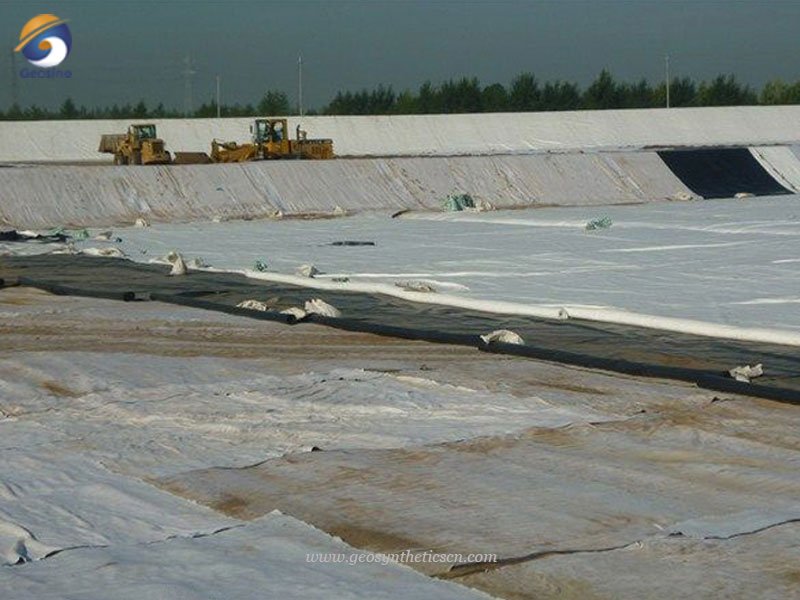
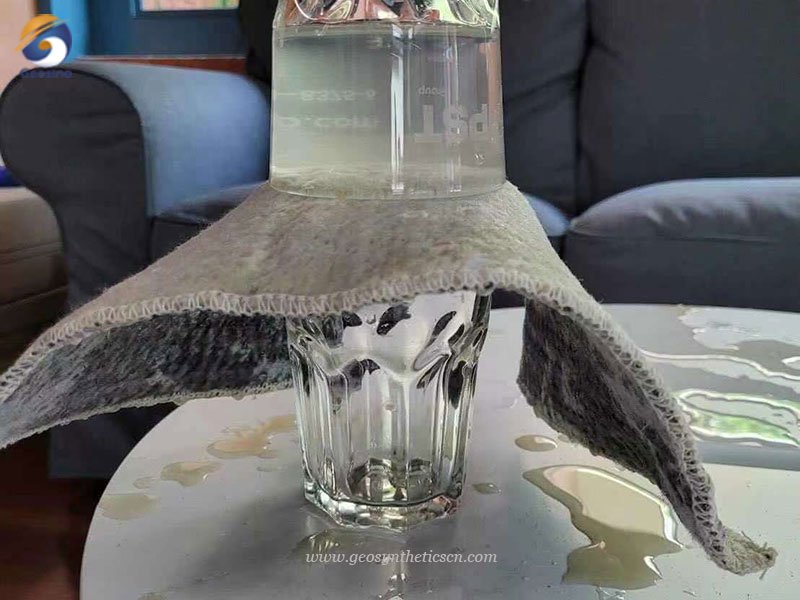
Construction method of GCL
- The weight of the GCL blanket material is relatively large, so it is advisable to use a shovel machine to carry and lay the waterproof blanket hoisting tool.
- The geosynthetic clay liner material is connected by lap joint.
- When laying the geosynthetic clay liner on a slope greater than 10%, the number of overlaps along the length of the slope should be minimized, and the bentonite pad on the slope must exceed the foot line of the slope by more than 1500mm.
- Any equipment used to lay the geosynthetic clay linert cannot be driven on the already laid geosynthetic material. When installing the geosynthetics clay liner, the outdoor air temperature cannot be lower than 0°C or higher than 40°C.
- The edges of all exposed geosynthetic clay liner must be immediately pressed with sandbags or other heavy objects to prevent the geosynthetic clay liner from being blown by the wind or being pulled out of the surrounding anchoring ditch.
- The laying method of the b geosynthetics clay liner must ensure that the bentonite waterproof blanket is in direct contact with the underlying foundation to eliminate wrinkles.
- The geosynthetics clay liner equipment must be approved by the supervision engineer before it can be used. Unprotected razors or “quick knives” are not allowed. I. The construction equipment that may damage the bentonite blanket cannot directly act on the bentonite blanket.
- When laying the bentonite blanket, minimize the drag of the geosynthetics clay lineron the foundation to avoid damage to the contact surface of the bentonite blanket and the ground.
About GEOSINCERE
As the professional geotextile and geosynthetics manufacturer and wholesaler, GEOSINCERE is always committed to geotextile research and development, manufacturing and installation services. We can provide our customers with most extensive lines of geotextiles and geomembranes for civil, mining, environmental and aquaculture engineering applications. GEOSINCERE has been keeping on investing in technological innovation, manufacturing facilities improvement and turnkey engineering abilities. Our extensive lines of geosynthetics products are well known for their ensured quality, high performance, excellent durability and best cost effectiveness. GEOSINCERE brand geotextiles and other geosynthetics products and solutions can meet your requirements by our solid technologies, innovative engineering solutions and excellent customer services. Hope to be your partner.
Our main innovative, high quality products include geotextiles, geomembranes, geogrids, geocells, geosynthetic clay Liner, and drainage boards, etc al. GEOSINCERE customers are from more than 100 countries.
GEOSINCERE offers both high quality geosynthetic products but also professional design and installation service. OEM, ODM, custom development and fabrication are also available. If you have any questions or inquiries, please fill and submit the following form, we will reply as soon as possible.

